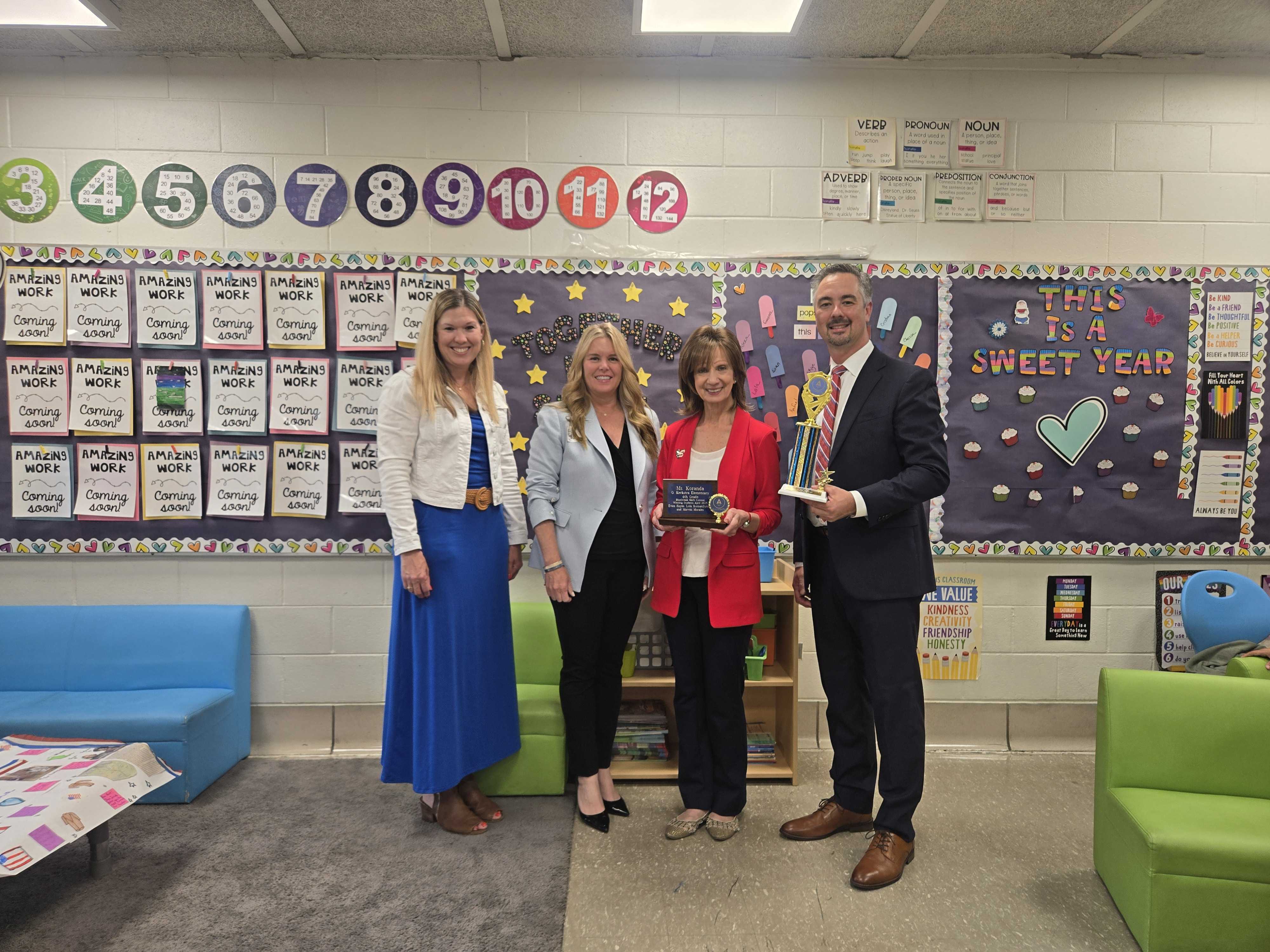
Spotlight: Forest Ridge and Kerkstra Elementary
Unlocking growth in mathematics: From SpEd to Tier I
The 2025-2026 school year marks Forest Ridge School District’s third with BlueStreak Math, and second using the platform for Tier I after seeing success with the program in special education students in year one.
One of the District 142 schools, in particular, G. Kerkstra Elementary School, has gone above and beyond with its math fluency practice, achieving mastery goals, creating grade-level contests, and even winning BlueStreak’s nationwide contest along the way.
To better understand how the Illinois district and grade school are using the program—and the growth they’re seeing as a result—we caught up with the district’s Director of Special Services, Dr. Lori Leppert, as well as Kerkstra Elementary principal Steve Nendza and fifth-grade teacher Molly Hollock.
Overview: District 142 + BlueStreak Math
Why they love BlueStreak
- Research-based
- Easy lift for teachers and administrators
- Independent, autonomous practice for students
- Adaptive engine facilitates remediation and acceleration to move all students forward
- Modern gaming visuals and animations for high student engagement
- More content (e.g., fractions, decimals) than other fluency programs
- Custom contests
- Reasonably priced
How they’re using it
- Year 1: Special education/Tier III
- Year 2+
- Modules: Whole numbers, fractions, and decimals
- At least 15 minutes per day
- During small group time and station work
- After-school program
- Summer learning
From Special Education to Tier I
District 142 kicked off its partnership with BlueStreak Math in the 2024-2024 school year after seeing BlueStreak’s impact on math fluency growth in other schools and learning about the program’s research-based approach. In that first year, the district rolled the math fluency program out to students in special education/Tier III (including in its After School Success Club) to test its efficacy and gauge the lift for teachers.
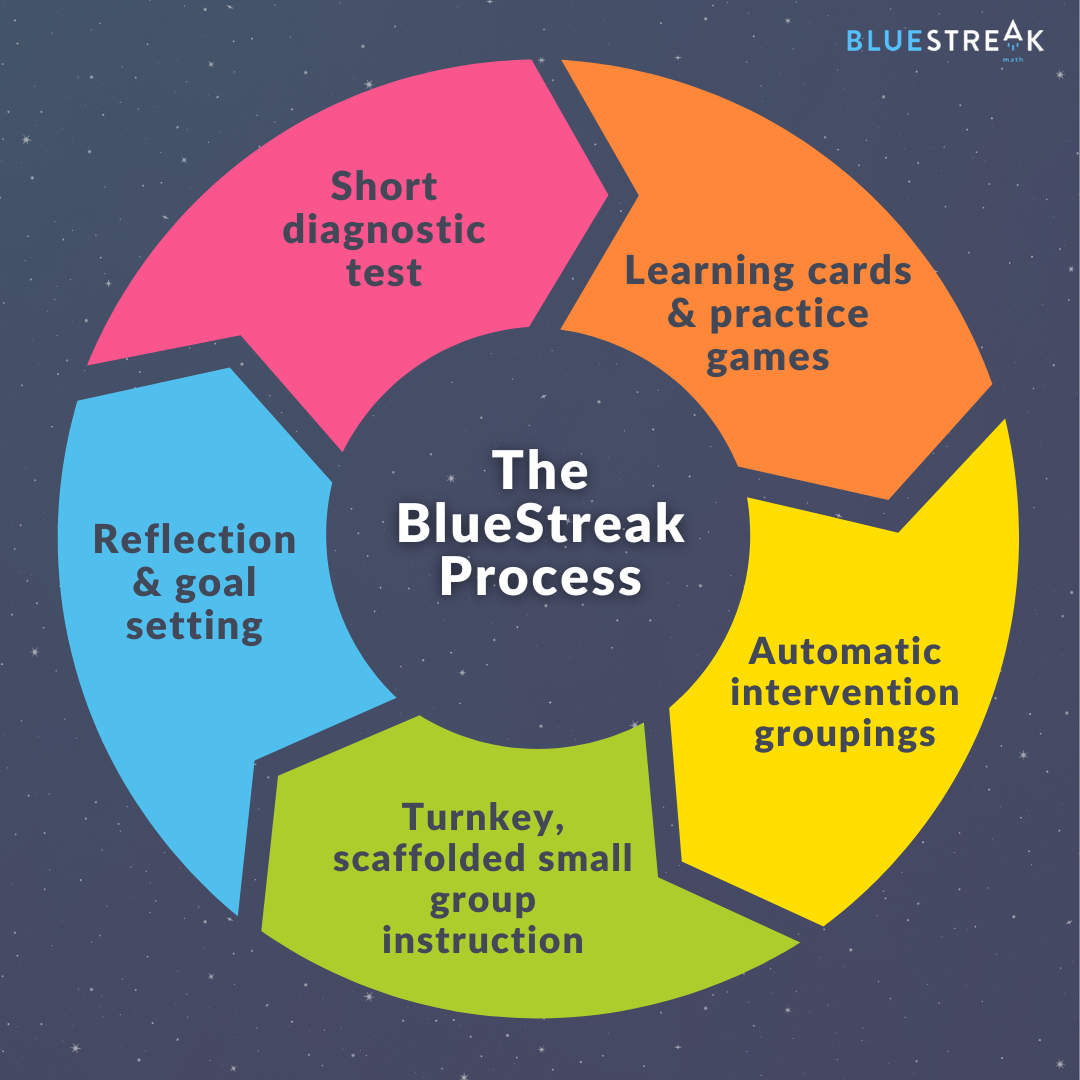
For these students, BlueStreak offered reporting aligned to IEP goals related to procedural and computational fluency, as well as accessible, low-anxiety learning games. SpEd teachers throughout the district coupled the digital platform’s multimodal Learning Cards and adaptive learning games with BlueStreak’s pencil-to-paper Strategy Logs (with turnkey, scaffolded mini-lessons) for a complete, deliberate practice-based approach to building fluency.
Excited about the potential to extend the program’s impact to additional students, the district decided to expand its BlueStreak usage to grades 1-8 in year two. This includes licenses for all students, Tiers I-III, in grades 1-6 and usage in grades 7-8 based on a multiplication and division fluency screener, as well as in special education.
“It helped having that small ‘test group’ of our special education students and staff in the first year because they kind of knew the platform and were able to support other staff for the full roll-out,” Principal of Kerkstra Elementary Steve Nendza said.
As part of the Tier I rollout, the district set the expectation that students would use the platform every day for at least 15 minutes to align with BlueStreak’s recommendations for “fluency with fidelity.”
Integrating BlueStreak into students’ daily routines
To ensure students could easily achieve the district-directed 15 minutes/day of fluency practice with BlueStreak, Kerkstra Elementary decided to integrate BlueStreak into students’ daily routines via their math block.
“During the school day, we have a small group time for math,” Principal Nendza said. “And part of that station work is that they spend 15 minutes on BlueStreak, whereas before it might have been flashcards.”
Teachers like Molly Hollock (Grade 5) found this predictable routine to be beneficial for both learning and engagement. Of her 90-minute math block, 60 minutes are dedicated to core, and 30 minutes are dedicated to small group time, the first 15 of which she allocated to BlueStreak Math.
“I got in the habit of carving out the 15 minutes prior to small groups to have the kids on BlueStreak. It was the same time every day, which really helped, and we had a timer going,” she said. “I found that if I did it the same time every day, the kids always knew. It was almost like a subject. They knew that every day from 11-11:15, we’re doing BlueStreak.”
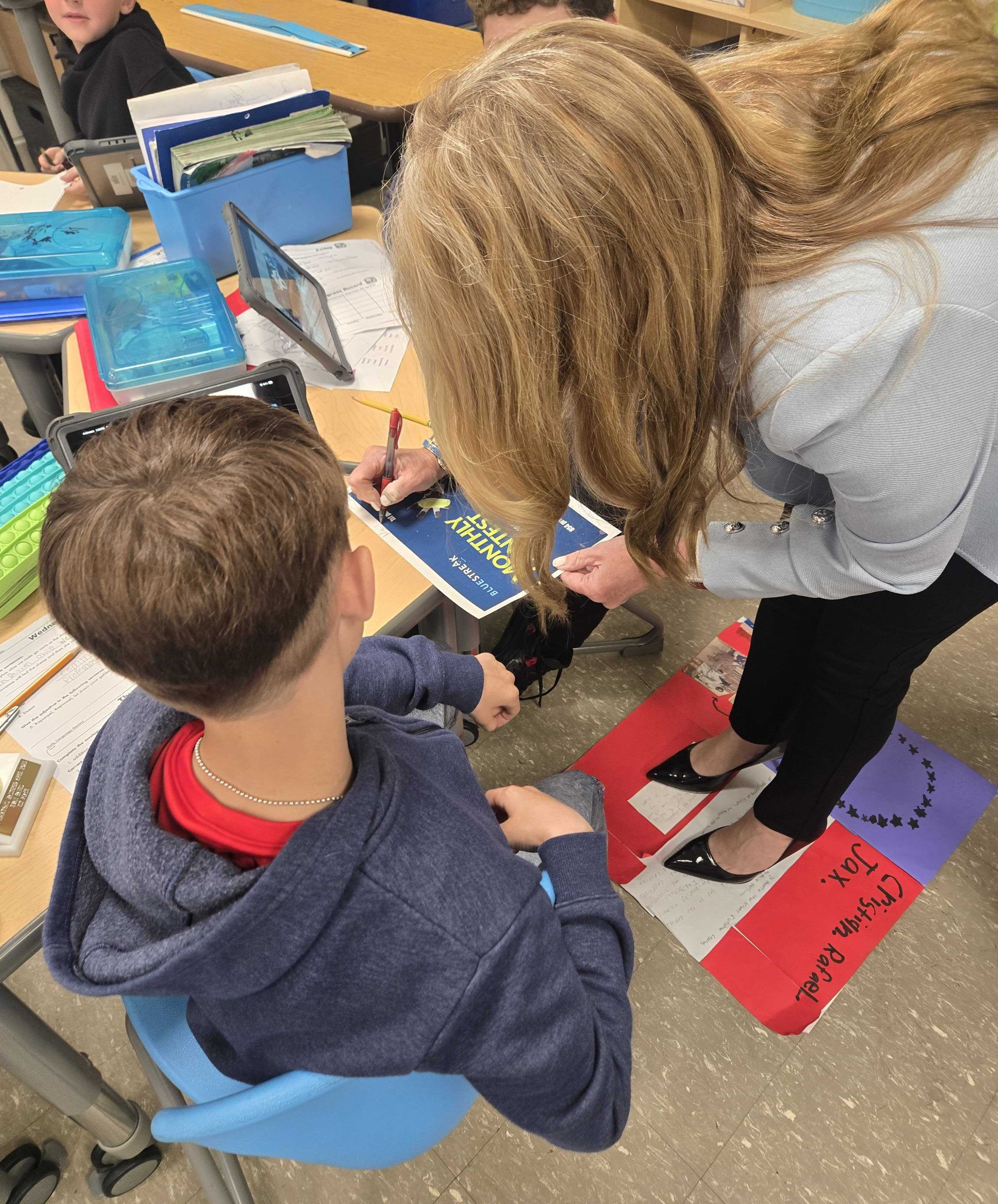
Of course, the goal of 15 minutes per day was just a minimum. Hollock said that because BlueStreak was so engaging, offering it as an early finisher also motivated kids to get their work done.
“If they were able to finish all the work from their core lessons and their small group lesson, then they were able to do additional BlueStreak. I had some students who naturally just wanted to keep going and competing with each other [in the multiplayer learning games],” she said. “One of my students—very, very driven kid—would even work on it independently at home.”
For Hollock, this engagement marked a significant departure from the school’s previous math fluency program.
“We’re working with 6- to 11-year-olds, so you have to think of who you’re trying to cater to. You want the visuals. You want the animations. You want them to feel like it’s a game and not just 4+4,” she said.
But the gamification of math fluency—with single-player and multiplayer learning games, leaderboards, contests, and more—wasn’t the only thing that set BlueStreak apart from other fluency programs. The amount of content available to her students, with modules like fractions and decimals, also made it stand out.
“I like BlueStreak 100% better. The other program was very dry, and once you test out, that’s it. There is nothing more to do,” she said. “For my kids who were doing well, BlueStreak gave them a challenge where they could always move on to a new level.”
Amplifying engagement with custom contests
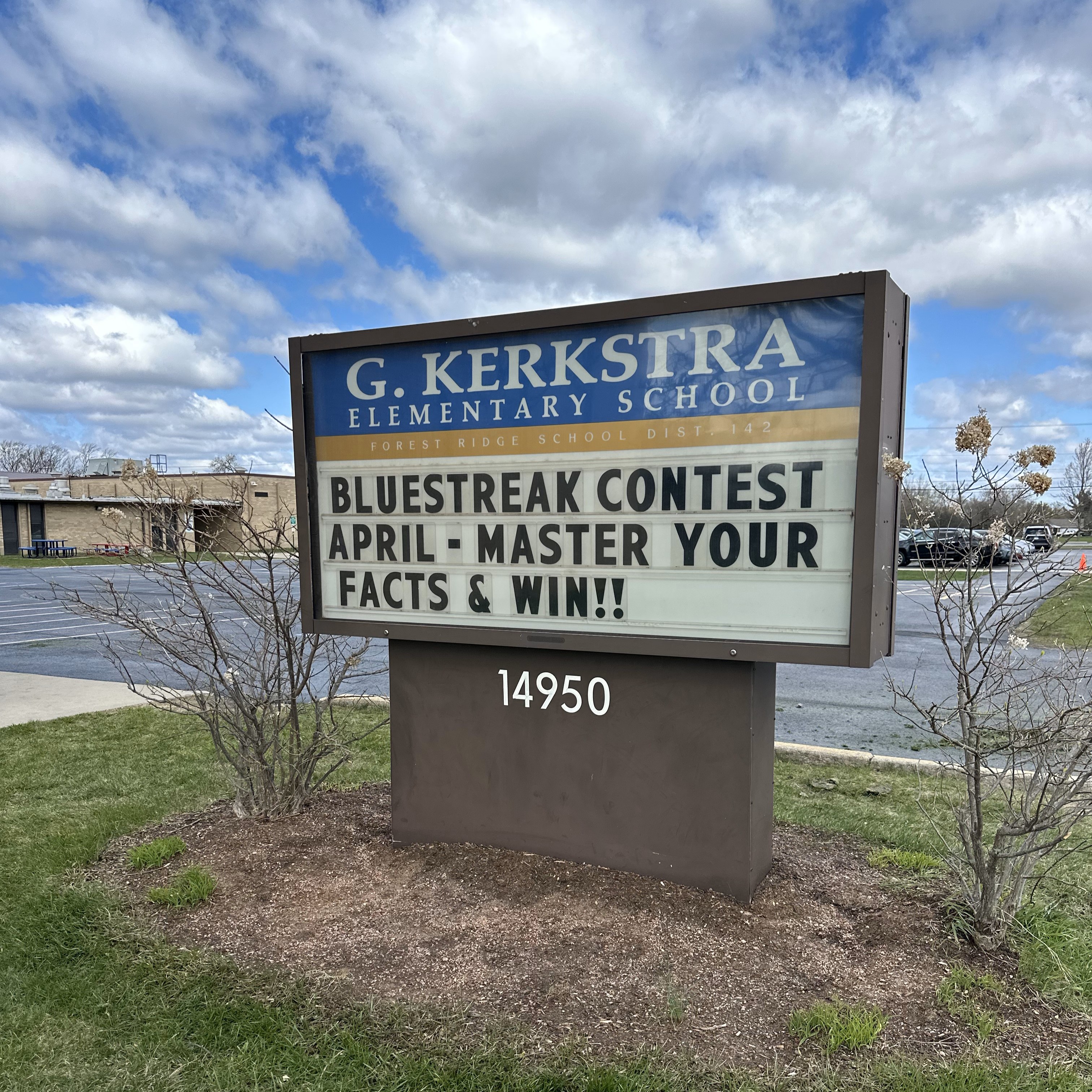
To close out the 2024-2025 school year, Principal Steve Nendza arranged a school-wide competition to encourage students and teachers at Kerkstra Elementary to increase usage and accelerate growth even further.
“We had a school-wide competition for BlueStreak where each grade level was competing for prizes,” he said. “We did a whole leaderboard system. If your class for the week had a certain number of minutes, you got a certain number of points. If your class had the most math facts mastered, you got so many points. It was a 5-week contest, and at the end, it was a total point winner for each class that won.”
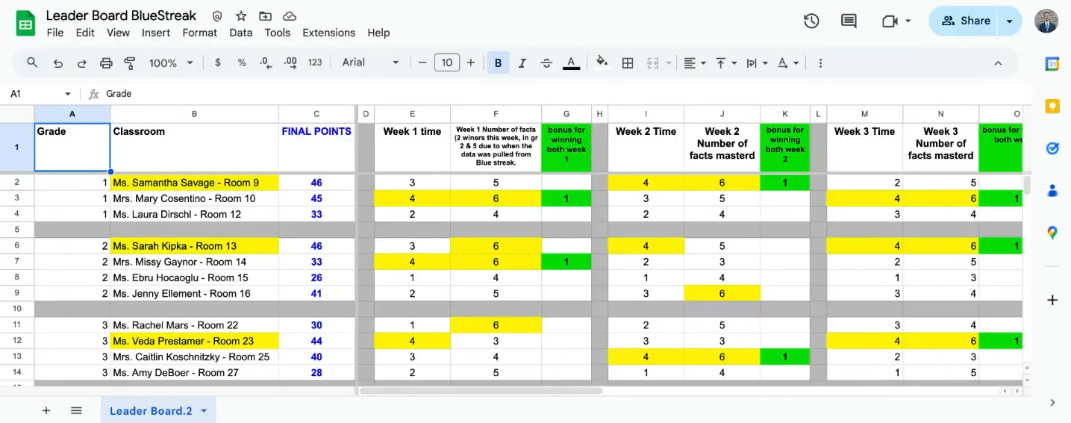
The school would provide updates on the contest during announcements to keep students motivated to continue practicing and mastering more math facts. And it worked: students were practicing more than ever.
“The competition was huge,” Principal Nendza said. “We needed a push for them, and it was a great time to do it. Students were so motivated, and they didn’t even know what they were winning a prize for! It ended up being that the winners got a popsicle party.”
The school’s push to increase usage also resulted in another major milestone: Kerkstra Elementary won BlueStreak’s Nationwide Contest in April. The top 3 students and their teachers, including Ms. Hollock, received BlueStreak trophies.

Beyond increasing engagement, the district has loved seeing how BlueStreak’s contests—which reward growth over skill level—build students’ confidence and give all students an equal chance to win.
“We organized a BlueStreak Math Summer Learning Contest, and a student with autism won first prize,” Dr. Lori Leppert, the district’s Director of Special Services, said. “This was likely the first time this student received an academic award, making it a truly remarkable moment.”
The BlueStreak Impact
With teachers committed to making BlueStreak a part of their daily routines, students at Kerkstra mastered an average of 19 equations per student per month during the 2024-2025 school year, outpacing BlueStreak’s recommendation of 4 equations mastered per week. Daily usage per student also tripled during the Spring contest compared to earlier in the semester.
By the end of the year, Principal Nendza was impressed by how many students were performing above grade level and decided the school would recognize them with an end-of-year celebration to keep the excitement going. He said BlueStreak played a significant role in these students’ growth.
“We found that it gives kids—the high flyers—the opportunity to move ahead, even if their teacher hasn’t gotten there yet.”
Kerkstra saw the greatest pre- to post-test growth in BlueStreak’s Fractions and Decimals modules, with students achieving 30-50+% growth on the majority of levels, and post-test scores of 100% on all decimals levels.
In the end, Principal Nendza credits BlueStreak’s student-centered approach to learning with the high engagement he and his teachers saw during the school year. He compared it to a teacher “hiding the vegetables”—making essential learning feel fun and effortless for students.
“A friend of mine used to talk about hiding the vegetables when you’re teaching. And I think BlueStreak is the epitome of hiding the vegetables. You can learn these facts on flashcards. You can learn them on paper and pencil. But it’s a much more engaging way to reinforce these concepts.”
